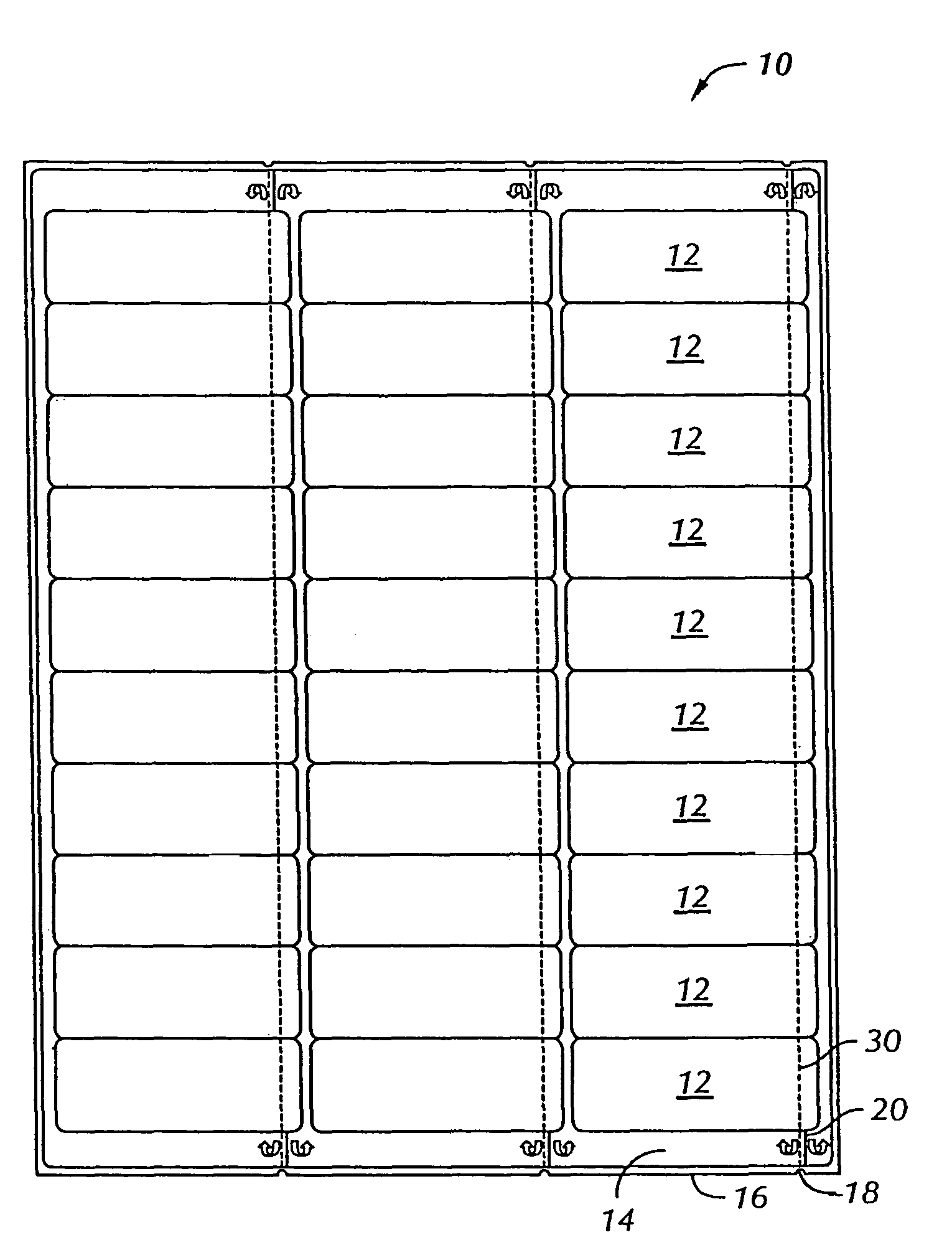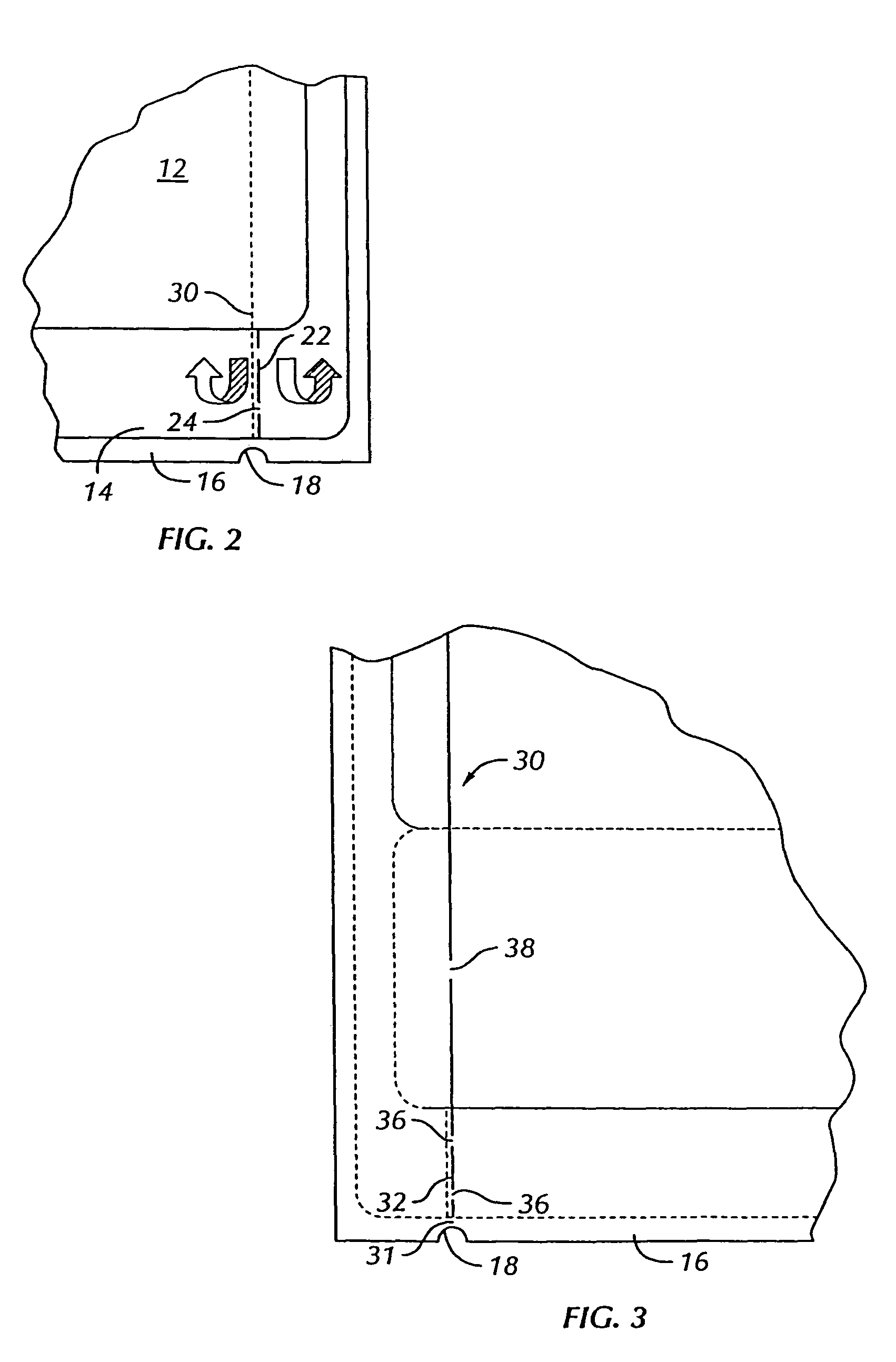Label sheet design for easy removal of labels
a label and label technology, applied in the field of label sheets, can solve the problems of requiring a fair amount of manual dexterity, difficult and time-consuming operation, and difficulty in separating labels and labels, and achieve the effects of reducing the number of labels
- Summary
- Abstract
- Description
- Claims
- Application Information
AI Technical Summary
Benefits of technology
Problems solved by technology
Method used
Image
Examples
first embodiment
[0017]FIG. 1 shows label sheet assembly 10 in which the labels can be easily peeled according to the present invention. The label assembly 10 is preferably of an overall standard size such as 8½ inches by 11 inches, or A4 (approximately 21 cm×29.7 cm), or 4 inches by 6 inches, or other size compatible with standard printers used with personal computers. Assembly 10 includes a release liner sheet or simply release liner 16 with a sheet of facestock material releasably adhered thereto via a pressure sensitive adhesive. The release liner 16 is coated with a thin layer of release material such as silicone, or is otherwise constructed or treated such that the labels can be easily removed therefrom. The sheet of facestock material comprises a generally rectangular sheet of paper or film facestock with a plurality of labels 12 formed therein such as by die cutting. The section of the facestock sheet not used for labels constitutes the border or matrix 14. In the figure the facestock sheet ...
third embodiment
[0026]FIG. 8 shows a third embodiment similar to the embodiment shown in FIG. 1, except that the label assembly does not include notches.
[0027]As shown in FIGS. 1 and 2, the facestock material is slightly smaller than the liner 16 such that matrix 14 does not extend to the edge of the label assembly. If the facestock were to extend to the edge of the label sheet, it would be desirable to form notch 18 in both matrix 14 and liner 16.
[0028]In yet another possible embodiment, the label assembly would not even include a matrix bordering the labels. In FIG. 1, for example, matrix 14 could be entirely stripped from the label sheet before the product is sold. Alternatively, the entire sheet of facestock material could be die cut such that the entirety of the facestock material formed labels. The facestock material could either take up the same amount of facestock area shown in FIG. 1, or a significantly smaller area. Regardless of how the facestock material were constructed, shaped, and cu...
PUM
| Property | Measurement | Unit |
|---|---|---|
| size | aaaaa | aaaaa |
| size | aaaaa | aaaaa |
| size | aaaaa | aaaaa |
Abstract
Description
Claims
Application Information
 Login to View More
Login to View More - R&D
- Intellectual Property
- Life Sciences
- Materials
- Tech Scout
- Unparalleled Data Quality
- Higher Quality Content
- 60% Fewer Hallucinations
Browse by: Latest US Patents, China's latest patents, Technical Efficacy Thesaurus, Application Domain, Technology Topic, Popular Technical Reports.
© 2025 PatSnap. All rights reserved.Legal|Privacy policy|Modern Slavery Act Transparency Statement|Sitemap|About US| Contact US: help@patsnap.com



